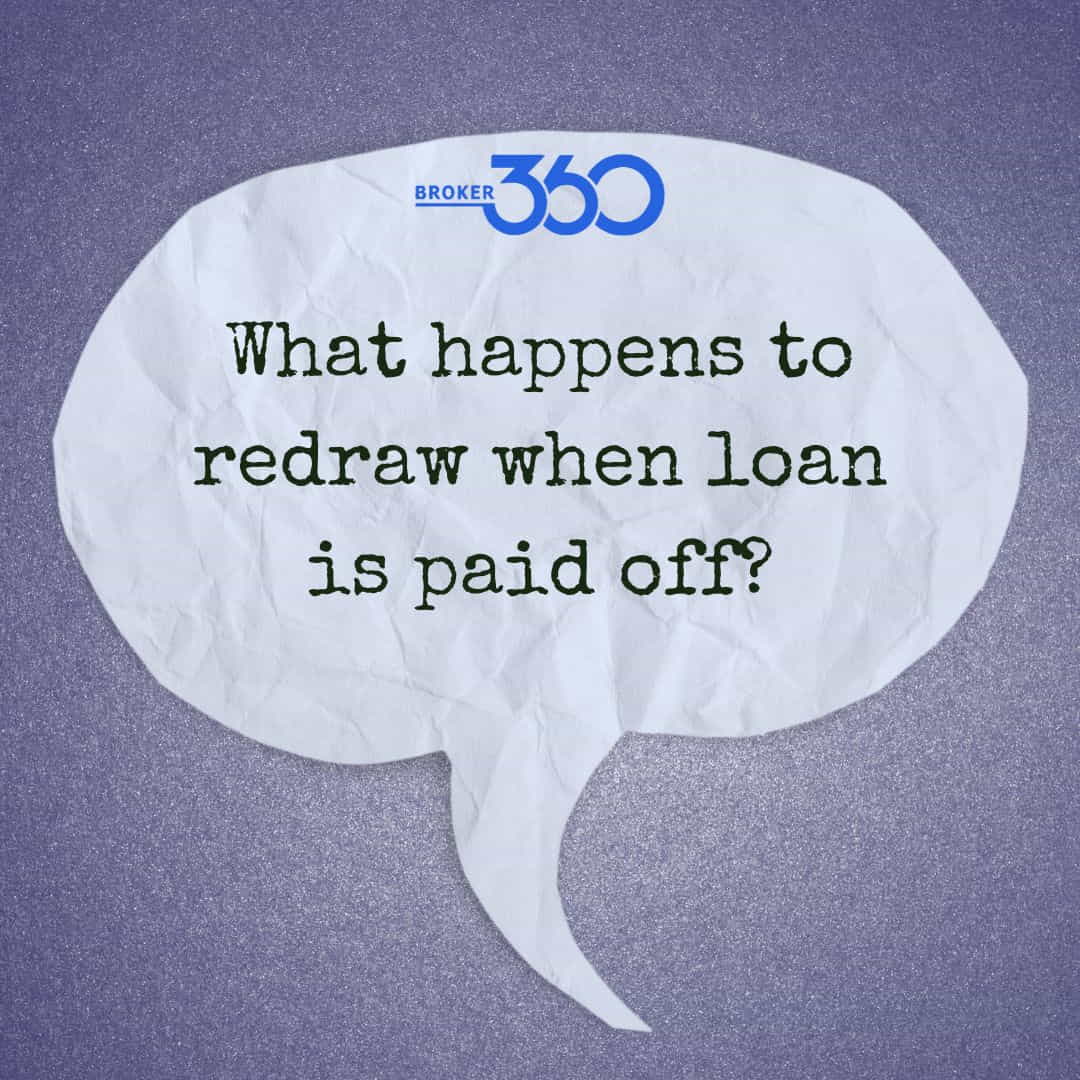Need a loan? Enjoy unlimited support from 9AM-9PM and 24-hour lodgement services.

- Broker360
- No comment
- December 6, 2024
Paying off your home loan is a major milestone, but many borrowers with a redraw facility find themselves asking, “What happens to my redraw funds once the loan is fully paid off?”
The answer often depends on your lender, loan terms, and how you’ve managed your redraw account.
In this article, we’ll unpack what typically happens to redraw balances, potential restrictions, and tips for making the most of your redraw funds before closing your loan.
What happens to your redraw balance when your loan is paid off?
Once your loan is repaid in full, the funds in your redraw account don’t disappear—they’re still yours. However, how you access them and what happens next depends on your lender’s policies and your loan terms.
1. Lenders may refund your redraw balance
In most cases, lenders will transfer any remaining redraw funds to your linked bank account once your loan is closed. It’s worth checking your loan terms to confirm how this process works.
2. Some lenders automatically apply redraws to the loan
Some lenders automatically apply any redraw funds to reduce your loan balance as you approach the final repayments. This means your redraw amount is used to pay off the remaining debt, leaving no balance to access after closure.
3. Access to redraw may be restricted before payoff
Lenders might impose restrictions on redrawing as your loan nears its end, limiting how much you can withdraw or requiring you to provide notice before accessing funds.
How to prepare for loan closure with a redraw account
If you have a redraw facility and are close to paying off your loan, here are a few steps to ensure you maximise your redraw funds:
- Check your redraw balance: Log into your loan account or speak to your lender to confirm how much is in your redraw account.
- Decide how to use the funds: Plan what you’ll do with your redraw amount—whether it’s reinvesting, saving, or covering other expenses.
- Contact your lender: Ask your lender what happens to redraw balances at closure. Some may require you to withdraw funds before final repayment, while others may refund them automatically.
Financial planning tips for managing your redraw funds
- Reinvest your funds: Use your redraw balance to invest in opportunities like property upgrades, additional savings, or other financial goals.
- Pay down other debts: Consider using redraw funds to pay off high-interest debts, like credit cards or personal loans, for greater financial flexibility.
- Build an emergency fund: If you no longer have a home loan, using your redraw funds to start or grow an emergency fund can be a smart financial move.
- Consult a professional: A mortgage broker or financial advisor can help you decide the best use of your redraw balance based on your financial goals.
Also read: Can I use my redraw to pay my mortgage?
Common questions about redraw balances after loan repayment
Will I lose my redraw balance if I pay off my loan?
No, redraw funds are still yours, but lenders may apply them to the loan balance or refund them to you directly.
Can the bank take my redraw?
In certain cases, like missed payments or financial hardship, lenders may restrict access to redraws. However, they cannot take your redraw without reason.
What if I want to keep using my redraw?
If you value the flexibility of a redraw facility, consider refinancing or renegotiating your loan to maintain access before paying it off.
Related: Why is my redraw amount reducing?
Ready to make the most of your redraw facility?
Navigating redraw policies and planning for loan closure can be complex, but you don’t have to do it alone.
At Broker360, our expert mortgage brokers can help you understand your redraw options, lender policies, and how to make the most of your funds.
To learn more about mortgage redraws and how you can take advantage of them, get in touch with our team.


